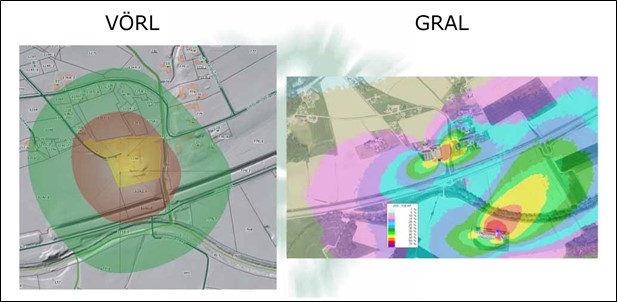If the visualization of farms keeping livestock took place until 2022 on the basis of the provisional guideline for the assessment of emissions from livestock farming in stables (the odor threshold distance and the nuisance distance of businesses with an odor number G = 20 or more had to be shown in the land use plan), this has been the case since the amendment to the law and the publication of the Styrian Odor Immission Ordinance 2023 with the help of the odor propagation model GRAL (Grazer Lagrangian Model). In order to enable uniform and error-minimizing input of the operational parameters in GRAL, Department 15 of the Office of the Styrian State Government provides the input software HofEr (yard recording software).
Following the HofEr training courses, which were carried out by Department 15 in 2023, the request was made to the HBLFA Raumberg-Gumpenstein to hold a special seminar on livestock farming and the different forms of management. The directions of use and forms of management for each animal category integrated in the HofEr software are based on the “ Styrian Emissions Directive ” (emissions from animal husbandry, report no. ABT15-Lu-04-2023) - the correct allocation of animal husbandry systems in practice is of central importance for the Extension and size of the company-specific odor zones.
At the HofEr seminar held on June 18, 2024 in Gumpenstein Castle, around 30 visitors from municipalities, administrative authorities and technical offices were provided with detailed information on cattle, pig and poultry farming by specialists. The content conveyed is now available to seminar guests in electronic form for practical use in order to ensure that the directions of use and forms of management are allocated in accordance with the guidelines. In addition to the speakers from Raumberg-Gumpenstein and the Steiermark Pig Advisory Service, representatives from Department 15 and a lawyer from the Styrian Chamber of Agriculture were present, who provided additional information from the respective specialist areas during the discussions.






